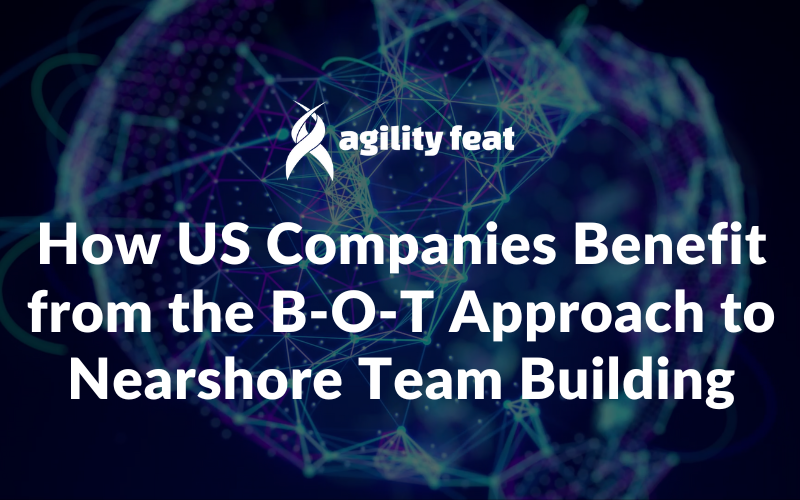As US companies continue to seek efficient and cost-effective ways to build and manage software development teams, the Build-Operate-Transfer (BOT) model has emerged as a compelling solution for nearshore team scaling. This strategic approach offers numerous advantages, from significant cost savings to enhanced control over operations.
In this blog post, we’ll delve into the specific benefits of the BOT model and why it’s an excellent choice for companies looking to establish a presence in Latin America.
Cost Efficiency
Reduced Costs
One of the most significant benefits of the BOT model is the potential for long-term cost savings. After the transfer phase, companies typically see an additional 20-30% reduction in costs compared to staff augmentation. This is due to the elimination of intermediary fees and the ability to directly manage salaries and expenses.
Optimized Budget Allocation and Effective Resource Utilization
By reducing overhead costs, companies can allocate their budget more effectively, investing in other critical areas such as innovation, marketing, and customer acquisition.
Enhanced Control and Compliance
Operational Control
Having direct operational control over your development team allows you to ensure that all work meets your specific compliance and quality standards. This is particularly important for companies in regulated industries like healthcare and FinTech, where stringent security and technical requirements must be met.
Customized Operations and Processes
The BOT model enables you to tailor operations and processes to meet your unique technical and security standards, ensuring that your development team aligns with your business goals and regulatory requirements.
Low-Risk Entry
Test the Waters with Minimal Risk
The BOT model offers a low-risk method to explore tech staffing in Latin America. You can evaluate the benefits and feasibility of operating in the region before committing to full ownership of the subsidiary.
Adaptable Plans
If your business needs change, there is no obligation to proceed with the transfer phase. This flexibility allows you to adapt your strategy without the risk of being locked into a long-term commitment.
Reduced Learning Curve
Expert Guidance with Local Expertise
Establishing a subsidiary in a new region can be complex and time-consuming. AgilityFeat’s expertise and local knowledge reduce the learning curve, allowing you to navigate local employment laws and regulations with ease.
We manage the subsidiary transparently while training your staff to take over.
Comprehensive Support for a Seamless Transition
Our team handles the complexities of setting up and managing the subsidiary, providing you with the support needed for a smooth transition to full ownership.
Employee Stability
Team Retention
The BOT model often results in lower turnover rates compared to traditional contracting. Employees have a clear path to becoming direct hires of your company, fostering a sense of stability and commitment.
Enhanced Productivity with Long-Term Engagement
A stable and committed team leads to higher productivity and better project outcomes. The BOT model helps you build a dedicated team that is aligned with your business objectives.
Ready to explore the BOT model for your company?
The Build-Operate-Transfer (BOT) model offers a strategic, cost-effective, and low-risk approach for US companies looking to establish a dedicated software development team in Latin America. With significant cost savings, enhanced control, and reduced turnover, the BOT model provides a comprehensive solution for companies aiming to expand their operations and achieve long-term success.
Contact us today for a free consultation! We’ll provide a tailored solution to help you establish and manage a dedicated development team in Latin America.










